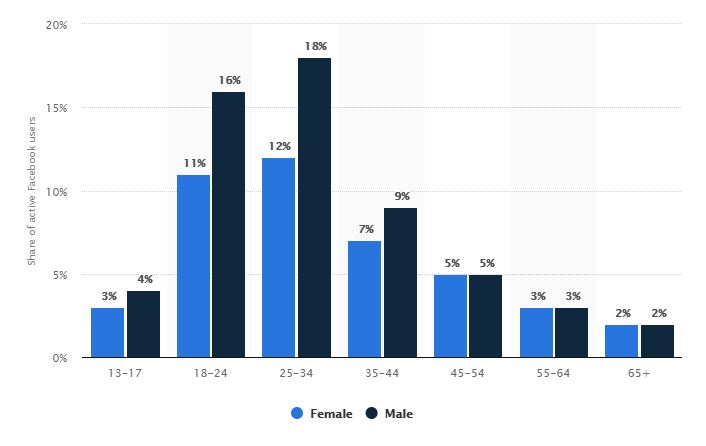media update’s Christine Gerber provides a simple guide on how to create a winning social media campaign.
Creating and implementing a social media campaign for the first time can be exciting and terrifying at the same time. You might be wondering where to begin, or whether the campaign will even be a success. Will people interact with it? How many people will join the conversation?
It’s time to stop wondering, and start planning! Here’s a quick five-step plan to get you started:
1. Choose the right social platform for your brand
Just as you would need to plan your outfit to suit a particular event (you wouldn’t wear a t-shirt to a black tie event, would you?), you also need to choose the right platform for your campaign so that you can target the correct audience.
This is because the tone of language used on each one – Facebook, Twitter, Instagram, LinkedIn, etc. – all differ … as do the audience demographics.
For example,
a recent rollout of Facebook’s demographics show that a majority of active users on the platform are males and between the ages of 25 and 34. Therefore, if you’re a brand looking to implement a campaign about beard oil, Facebook would be an ideal choice.
 Image sourced from Statista
Choose your images wisely
Image sourced from Statista
Choose your images wiselyDon’t forget that each image or campaign video that you use for your campaign has to suit each specific platform you launch your campaign on. The image and video dimensions on Facebook, for example, are different to that of Instagram and Twitter.
Be sure to check out the specs on each platform before you post so that you’re not just showing parts of your visuals.
Additionally, ensure that your image portrays your campaign in the correct light. Consider the following:
- What is the main objective of the campaign?
- Does the image/video convey the correct tone?
- Is the tone of my campaign serious, promotional, humorous?
- What audience would the image appeal to?
Once you’ve asked yourself these questions, start thinking of a design for your image. Try out varying designs on the platforms you’ve decided to implement your campaign on and see what works best.
For example, high-quality designs that are beautifully crafted would be good to use on Instagram, as the platform’s main focus is on visuals. However, you might find that the same image might not work for platform like Twitter, where audiences are more focused on text and wording.
2. Come up with a unique campaign hashtag
Ideally, you’ll want to create a unique hashtag for your campaign that your followers on social media will actually
want to use. Make sure the hashtag is relevant and specific to your campaign as to avoid confusion.
If you’re promoting a new product for pets, such as a toy, for example, you could come up with a hashtag that includes the product as well as what it will do for pets. Let’s say the toy is for puppies – your hashtag could be #PlayfulToysForPups.
Note: Once you’ve come up with a hashtag, use it in
all of your posts. Use it in the images. Use it in the headlines. Use it everywhere.
3. Engage, engage, engage
It’s important to get people talking about your campaign, and a conversation goes both ways – so ensure that your social media campaign is not one-sided.
This means that when someone responds to your campaign – whether it’s in the form of a comment, ‘Like’, retweet, etc. – you
need to react! Respond to that comment, thank them for that ‘Like’, ‘Like’ that retweet and just be social!
Even if it’s a negative comment about your campaign, it’s important to engage. Remember, not responding would look even worse.
4. Make sure the media knows what you’re up to
To avoid the sound of crickets once your campaign has launched, alert the press about your new social media campaign. You could start by writing up a press release about why you’re launching the social campaign and include details of what the campaign will entail, who it’s catered for and why people should care.
Distribute the press release as widely as possible. Publish it on your own website, create a hype by sharing the release on social media. Make sure you contact the right media members about your campaign.
5. Keep track of your efforts
Once your campaign has launched and the social posts are out, your job is … not done yet. You still have to monitor your campaign to keep track of how well it’s doing. Even after your campaign has ended, analyse your efforts and see how well your campaign has performed.
This is so you can learn from your mistakes,
and from your successes.
Keep track of what you did well during your campaign so that you can implement the same strategy for your next one, or even build on the old one – you could be heading for ‘social media campaign: round two’.
A number of new social media terms have come to light, and it can be confusing to keep up with all of them. Luckily, we’ve compiled a list to get you started. Read more in our article, 10 Social media terms you should add to your vocabulary.
*Image courtesy of Vecteezy